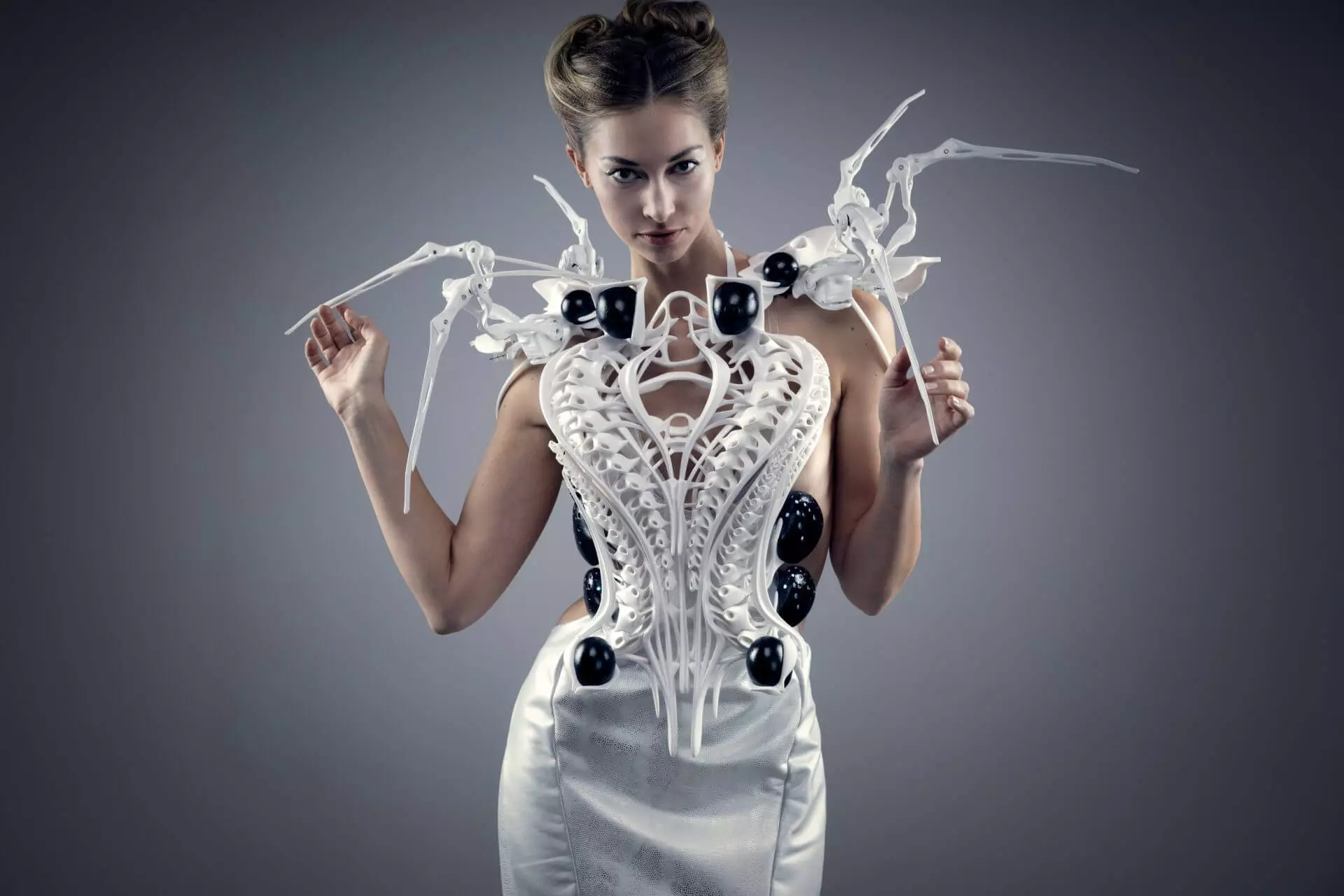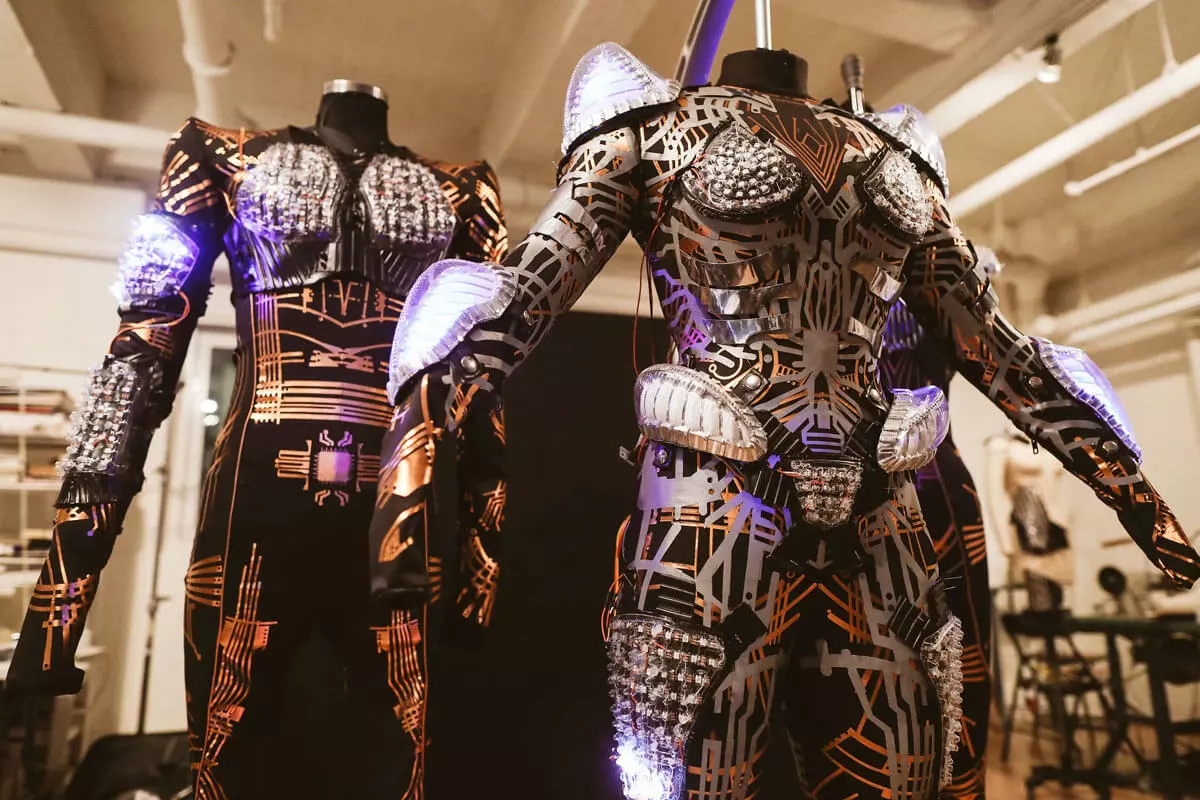When it comes to fashion, there’s more than meets the eye. The world of style is undergoing a captivating transformation, thanks to the powerful influence of technology. As an avid fashion enthusiast, I’ve witnessed firsthand how technology has seamlessly merged with the realm of fashion, igniting a wave of innovation. From wearable gadgets that blend seamlessly with our outfits to 3D-printed garments that push the boundaries of design, the intersection of fashion and technology has opened up a world of endless possibilities. Join me on a journey as we explore the captivating fusion of style and innovation in the realm of fashion and technology.
Content

Historical Overview of Fashion and Technology
Fashion and technology have a rich history of intertwining and influencing each other. From the earliest days of human civilization, technology has played a crucial role in shaping fashion trends and revolutionizing the industry. I will take you on a journey through time, exploring the significant milestones where fashion and technology intersected, giving birth to innovative transformations.
Also Read: The Influence of Streetwear in High Fashion: Redefining Style with Urban Edge
1. Ancient Origins of Technological Influence
In ancient civilizations like Egypt and Mesopotamia, technological advancements such as looms and dyeing techniques allowed for the creation of intricate textiles and garments. These innovations paved the way for the development of sophisticated clothing styles and craftsmanship.
2. The Industrial Revolution
The 18th and 19th centuries brought about the Industrial Revolution, marking a significant turning point in the fashion industry. The invention of the sewing machine revolutionized the process of garment production, increasing efficiency and enabling mass production. This led to the democratization of fashion, making stylish clothing more accessible to the general population.
3. Art and Technological Experimentation
In the early 20th century, artists and designers started experimenting with technology to create avant-garde fashion. The incorporation of electric lighting in garments and the exploration of unconventional materials showcased the fusion of art, technology, and fashion. Visionaries like Elsa Schiaparelli pushed boundaries by collaborating with Salvador Dalí to create iconic pieces, blending artistry and innovation.
4. Space Age and Futuristic Fashion
The mid-20th century witnessed a fascination with space exploration, inspiring fashion designers to envision futuristic garments. Paco Rabanne, for example, used unconventional materials such as metal and plastic to create space-age designs. The iconic silver dresses he designed became synonymous with the blending of fashion and technology.
5. The Digital Age
With the advent of computers and the internet, fashion found new ways to embrace technology. Designers began utilizing computer-aided design (CAD) software to streamline the design process and create intricate patterns with precision. E-commerce platforms emerged, transforming the way people shop for fashion and blurring the boundaries between virtual and physical retail experiences.

Current Trends in Fashion and Technology
In the dynamic world of fashion, technology continues to play a pivotal role, shaping trends and revolutionizing the industry. I will explore the current trends where fashion and technology converge, bringing forth exciting innovations that enhance our clothing and shopping experiences.
1. Wearable Technology and Smart Textiles
One of the prominent trends in fashion and technology is the integration of wearable technology and smart textiles into garments. From fitness trackers to smartwatches, these devices seamlessly blend style and functionality. For instance, I personally enjoy wearing a smart ring that tracks my daily activity and heart rate, while also serving as a stylish accessory. Smart textiles, like conductive fabrics, allow for the incorporation of sensors and interactive elements into clothing, enabling features such as temperature regulation or even LED light displays.
2. 3D Printing in Fashion
Another trend revolutionizing the fashion landscape is 3D printing. This technology has the power to transform the way garments are designed and manufactured. With 3D printing, designers can create intricate and customized pieces with unparalleled precision. For instance, I was amazed by a 3D-printed dress that perfectly molded to the wearer’s body, showcasing the potential of this technology to push the boundaries of fashion design.
3. Virtual and Augmented Reality in Fashion
Virtual and augmented reality (VR/AR) are making significant strides in the fashion industry, particularly in the realm of retail and marketing. Imagine being able to try on clothes virtually, without stepping into a fitting room! With VR, this becomes a reality, allowing shoppers to experience the look and fit of garments in a virtual environment. Additionally, AR enhances the in-store experience by overlaying digital information or virtual fashion showcases, making shopping more immersive and engaging.
4. Artificial Intelligence (AI) and Machine Learning
AI and machine learning technologies are transforming various aspects of the fashion industry. Personalized fashion recommendations based on individual preferences and style are becoming more accurate and efficient through AI algorithms. Additionally, machine learning is revolutionizing trend forecasting, helping designers stay ahead of the curve and optimizing supply chain processes. AI-driven virtual stylists are also becoming popular, offering personalized fashion advice through digital platforms.
5. Sustainability and Technology
The growing concern for sustainable practices in fashion has led to the integration of technology to address environmental challenges. Innovations such as fabric made from recycled materials or the use of digital tools to optimize production processes and minimize waste are becoming increasingly prevalent. For instance, I recently came across a brand that utilizes blockchain technology to provide transparency and traceability in their supply chain, ensuring ethical and sustainable practices.
The current trends in fashion and technology highlight the remarkable advancements that are reshaping the industry. From wearable technology and 3D printing to VR/AR experiences and AI-driven solutions, the possibilities are endless. As technology continues to evolve, fashion will undoubtedly continue to embrace innovation, offering us exciting and transformative experiences in the way we dress, shop, and express our personal style.

Conclusion
In this captivating journey through the world of fashion and technology, we’ve explored how these two realms merge to create a breathtaking fusion of style and innovation. From wearable technology that seamlessly integrates into our daily lives to the revolutionary potential of 3D printing and the immersive experiences offered by virtual reality, the possibilities are endless. As I reflect on the incredible advancements and creative collaborations that define this intersection, I am filled with excitement for the future of fashion. The ongoing evolution of style and technology promises to bring us even more astonishing breakthroughs, revolutionizing the way we express ourselves through clothing and enhancing our lives in ways we never thought possible.
FAQs
u003cstrongu003eHow can wearable technology enhance the fashion industry?u003c/strongu003e
Wearable technology combines functionality and style, offering exciting possibilities for the fashion industry. These tech-infused accessories and garments, such as smartwatches or fitness trackers, not only provide practical features but also add a touch of personal style.
u003cstrongu003eAre there any challenges in integrating technology into fashion design?u003c/strongu003e
Integrating technology into fashion design does present some challenges. One major hurdle is finding the right balance between aesthetics and functionality. Designers must ensure that the technology seamlessly integrates into the garment without compromising its style or comfort.
u003cstrongu003eHow does 3D printing revolutionize the fashion industry?u003c/strongu003e
3D printing has revolutionized the fashion industry by enabling new possibilities in design, customization, and production. Designers can create intricate and unique pieces that were previously difficult to achieve using traditional manufacturing methods.
u003cstrongu003eWhat are the benefits of virtual and augmented reality in fashion?u003c/strongu003e
Virtual and augmented reality offer immersive experiences in the fashion industry. Virtual reality allows customers to virtually try on clothing, eliminating the need for physical fitting rooms. It provides a realistic and interactive shopping experience, enhancing convenience and reducing returns.
u003cstrongu003eWhat ethical considerations arise with the integration of technology in fashion?u003c/strongu003e
The integration of technology in fashion raises important ethical considerations. Privacy and data security are crucial concerns when wearable technology collects and processes personal information. It is essential for companies to prioritize the protection of user data and maintain transparent practices.

Genevie Keaney is an experienced fashion blogger. She has been blogging for nearly 10 years, and her blog posts are often featured in major publications. Her blog posts cover everything from the latest trends to tips on how to wear certain pieces of clothing. Theresa’s favorite style icons include Audrey Hepburn and Michelle Obama, who she cites as having great style.





















